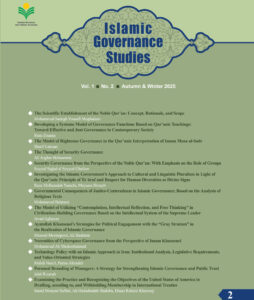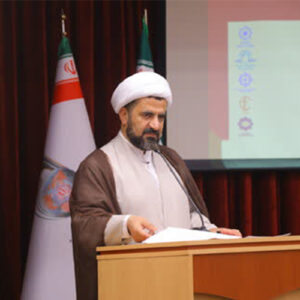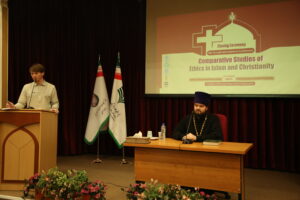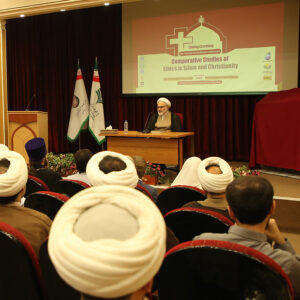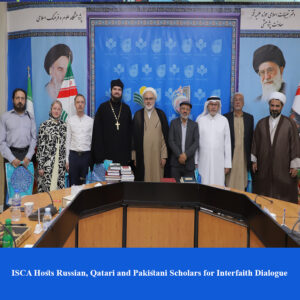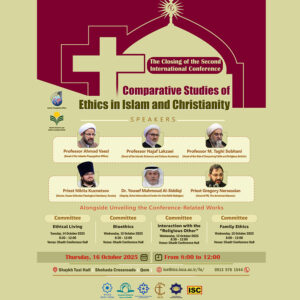Subject Studies, Problem Studies, Generalities, and Jurisprudential Rules of Holy Shrines
Seifollah Sarrami [1]
Keywords
Holy Shrines; Reverence of Rituals; Construction of Holy Shrines; General Principles of Jurisprudence of Holy Shrines; Jurisprudential Principles of Holy Shrines; Rulings Governing Relations between Shrines and Governments.
Problem Statement
The establishment of large holy shrines, such as the holy shrines of Imam Hussein and Imam Reza (peace be upon them), the extensive movement of people to these sites, and the various social, cultural, economic, and other activities and interactions by the custodians, staff, pilgrims, and others in these places, and their relationship with governments create numerous relationships involving individuals and different institutions. These relationships give rise to numerous jurisprudential issues. Among these issues are the duties and qualifications of the custodians and staff, the authority and rulings concerning the intervention of governments and rulers, and the rights and duties of pilgrims.
Primary and Secondary Questions
The main question of this research is as follows: What are the subject studies, problem studies, generalities, and jurisprudential rules of holy shrines? Among its secondary questions, the following are included:
Historically, how have holy shrines been formed?
What are the fundamental and foundational jurisprudential issues of holy shrines?
What is the relationship between holy shrines and the jurisprudential rule of “reverence of rituals”?
What are the duties and qualifications of governments in relation to holy shrines?
Objectives
The aim of this research is to establish the foundations of social jurisprudence for holy shrines. This objective, encompassing subject studies, problem studies, and understanding the generalities and jurisprudential rules of holy shrines, has been achieved in this study. However, the opportunity and phase for inferencing and resolving secondary jurisprudential issues related to the shrines have not been possible.
Method
“The research method in the first section is primarily historical and descriptive, based on historical and narrative sources. In the second section, it is ijtihadi and within the framework of Islamic jurisprudence and Usul Imamiya.”
Structure
This research consists of two sections: the first section is on subject studies and problem studies of jurisprudence of holy shrines in the context of their establishment history. This section includes four chapters: subject studies of the formation of holy shrines up to the contemporary period; a historical overview of the management and financial transactions of holy shrines; the ownership status of holy shrines; and a jurisprudential subject study of holy shrines. The second section covers the general principles and jurisprudential rules of holy shrines, including five chapters: the reverence of religious rituals and its relation to holy shrines; the legitimacy and desirability of establishing holy shrines; examining the ruling of mosques for holy shrines; general jurisprudential relations of holy shrines with governments; and the relationship of the obligation of enjoining good and forbidding wrong with the jurisprudence of holy shrines.
Novelty
The primary focus on the jurisprudence/rulings of holy shrines, with a social approach and special attention to the jurisprudential rulings regarding the relationship between governments and holy shrines, is one of the novelties of this research. This topic has previously been addressed in a scattered, marginal, and very brief manner in jurisprudential works. Another major novelty of the research is dealing with the subject studies with particular attention to the history of the formation and construction of shrines. The third major novelty of the research is providing a structure for the fundamental and super structural-jurisprudential issues of shrines with the aforementioned approach. The fundamental issues have been examined and concluded within this research, but the numerous super-structural derivatives are deferred to future studies.
The research on fundamental issues also contains significant novelties, including detailed and argumentative discussions to prove the legitimacy of the establishment and construction of holy shrines, based on arguments from the Quran and reasoned responses to denials, objections, and questions raised by Wahhabi thoughts regarding this legitimacy.
Results
Some of the most important results are as follows:
- The Quran and the Ahl al-Bayt (peace be upon them) are the foundation of the shrines, at least in some cases.
- Historical reports from the early period of the Abbasid era, the time of the presence of the Imams (peace be upon them), until later periods, indicating the destruction and demolition of the holy shrine of Imam Hussein (peace be upon him), show the existence of the influential holy shrine and the extensive movement of the followers of the Ahl al-Bayt towards it during that era, in such a way that the oppressive government felt threatened by it.
- Historical evidence and indications can prove that the appointment of a specific custodian and the placement of the administration of the holy shrines under the umbrella of government or the highest governmental authority began during the Safavid period. Therefore, the Safavid era marks a turning point in the history and subject studies of the holy shrines. Documents indicate that during the Safavid era, the administration of the holy shrine of Imam Reza was modeled to a significant extent, and in proportion to the need, after the governance structure and branches of the government.
- The obligation to show reverence is merely the acknowledgment of existence. Beyond this mere acknowledgment, in various levels of reverence, it becomes Mustahab (commendable), and going further, it reaches the point where disrespect leads to condemnation and carries the ruling of haram (forbidden).
- The nature of rulings governing the relationships between the shrines and governments differs between religiously legitimate and illegitimate governments (from a jurisprudential perspective).
- The obligation of enjoining good and forbidding evil is among the fundamental duties that significantly influence the rulings of the holy shrines. The type of impact this obligation has on the jurisprudence of the holy shrines depends on the jurisprudential interpretation of the obligation itself, regarding its inclusiveness or exclusiveness, concerning practical actions by the obligated individuals, without being restricted to the permission of the religious ruler.
[1] Associate Professor, Islamic Sciences and Culture Academy, Qom, Iran. (sarrami.sayfollah@isca.ac.ir)


